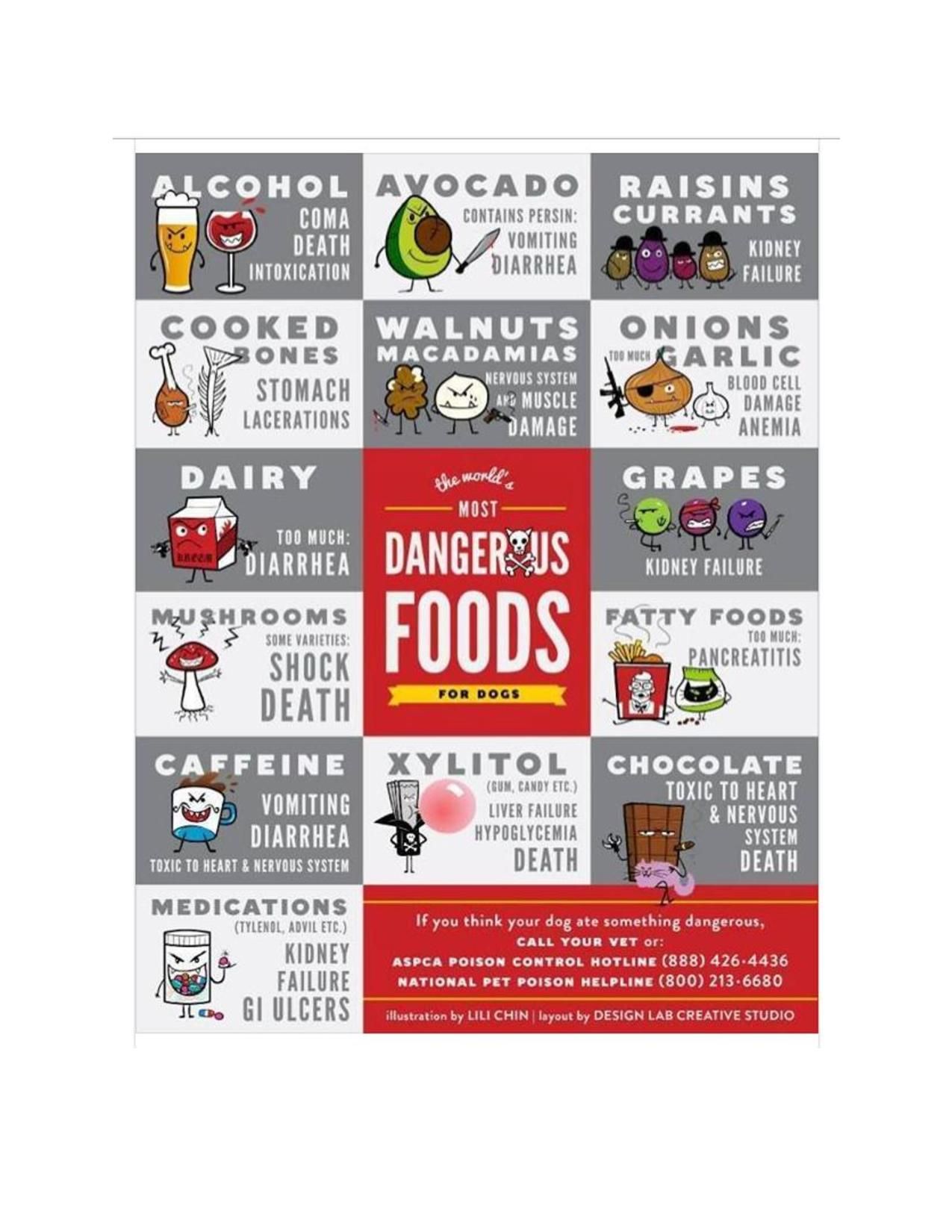

Every month, as part of our team meetings, one team member takes on the task of presenting an important topic to the staff. At our recent June meeting, Danielle did a great job on educating us all on some of the known - and not so known - dangers our pets can be exposed to. Check out her list and let us know if any were new to you :)
Pet Toxins
According to the PetPoison Helpline
Heat and Humidity
- Not a direct poison, but animals don’t sweat like humans, so they over heat fast
- Cars can quickly get up to 150+ degrees
- Do not treat dogs with ice water, rather cool water and immediately seek veterinary attention
Salt water toxicity
- Though we don’t really live by a beach, it is interesting
- Causes salt poisoning because of high levels of salt in the sea
- Signs can follow in a quick progression include walking drunk, depression, seizures
- Easiest to prevent is by offering bottled water when at the beach
Compost piles/bins
- Toxic to pets and wildlife
- Create mycotoxins as they decompose
- Clinical signs include agitation, panting, drooling
- Signs can show within 30 minutes to several hours
Mole and gopher baits
- Contain zinc phoshides which causes gas
formation in the stomach
- As a caution to us, if we release the gas from the pet’s stomach, it can be hazardous to us.
- Could contain a neurotoxin
Flea and tick products
- Make sure that cats don’t have access to the ones labeled “dog only”
Pesticides
- Now a days, this is not the concern it used to be, as the active ingredients are used in lower concentrations
- More likely to cause pancreatitis or a foreign body block
- Check the label for more instructions
Mushrooms
- Most are not toxic
- If your eats a mushroom, induce vomiting to be safe
- Ensure that the pet stays alert and upper airway stays open
- Bring mushroom pieces in paper towel to your vet
- Signs of toxicity include abdominal pain, ataxia, diarrhea, vomiting, tremors
Firecrackers
- Usually just a frightening hazard
- Make sure pet doesn’t chase a lit fire cracker
- Causing burns on paws, mouth and face or GI if they ingest it
- Chewing on some brands can cause kidney failure
Plants
- Grasses is generally non-toxic to dogs
- Tomato plants
- Part of the nightshade family
- Green tomatoes are the worst
- Toxin decreases as the tomato ripens
- Signs of toxicity include GI irritation, ataxia and weakness
- Poinsettias
- stems and leavescause GI irritation and vomiting
- not deadly in small amounts
- Easter Lilies
- All parts cause depression, vomiting and diahrrea in cats
- If untreated cats will die of kidney failure
Onions and garlic
- Large concentrations cause anemia
- Wild onions are more toxic
- Cats and cows are more sensitive than other animals
Grapes or raisins
- Signs are vomiting, diarrhea, and severe acute renal failure
- Require aggressive supportive care
Rodenticides (2 types)
- Zinc phoshide or strychnine is the most toxic
- Life threatening emergency because of concentration
- Contain anticoagulants (can’t clot blood)
- Antidote available
- Always have the original packaging to help your vet diagnose your animal’s severity
Fertilizer
- Variety of forms, and generally only cause low level of toxicity irritation
Mulch
- If made from a cocoa bean causes occasional toxicity
- When mulch is fresh, it has a chocolate aroma
Blue-green algae
- This algae actually contains a cyanobacteria which affects nervous system
- Signs include vomiting, lethargy, shock,
weakness
- Seen after dog ingests or swims in affected water
About the Business
BUSINESS
Animal Hospital
Liberty Veterinary Hospital
6823 Yankee Rd., Liberty Township, OH 45044
Have a question? Ask the experts!
Send your question

